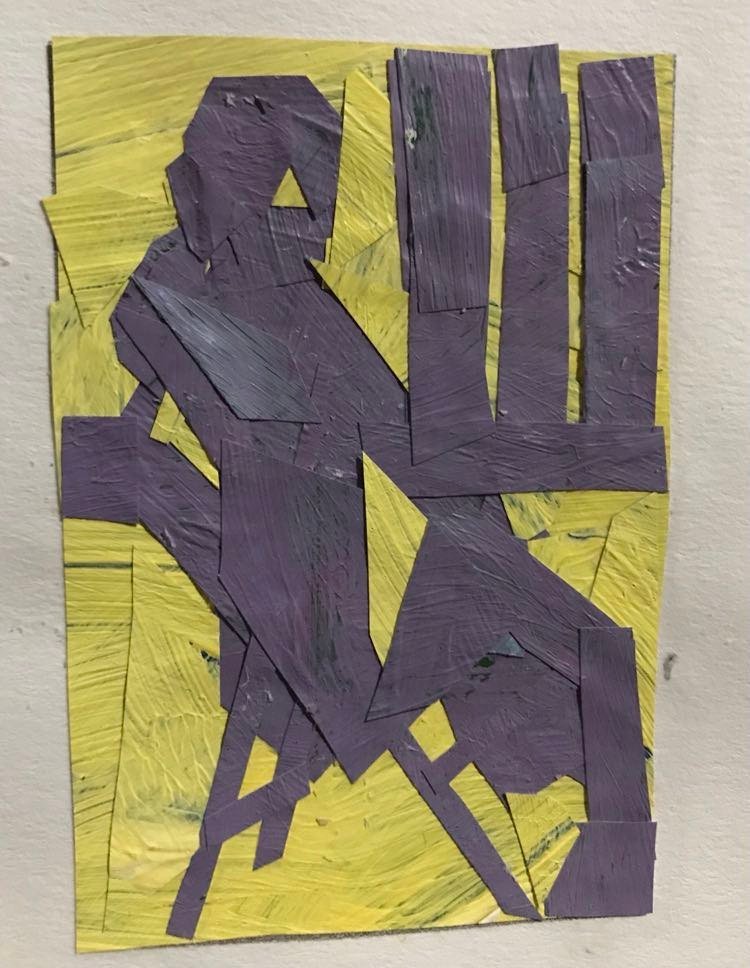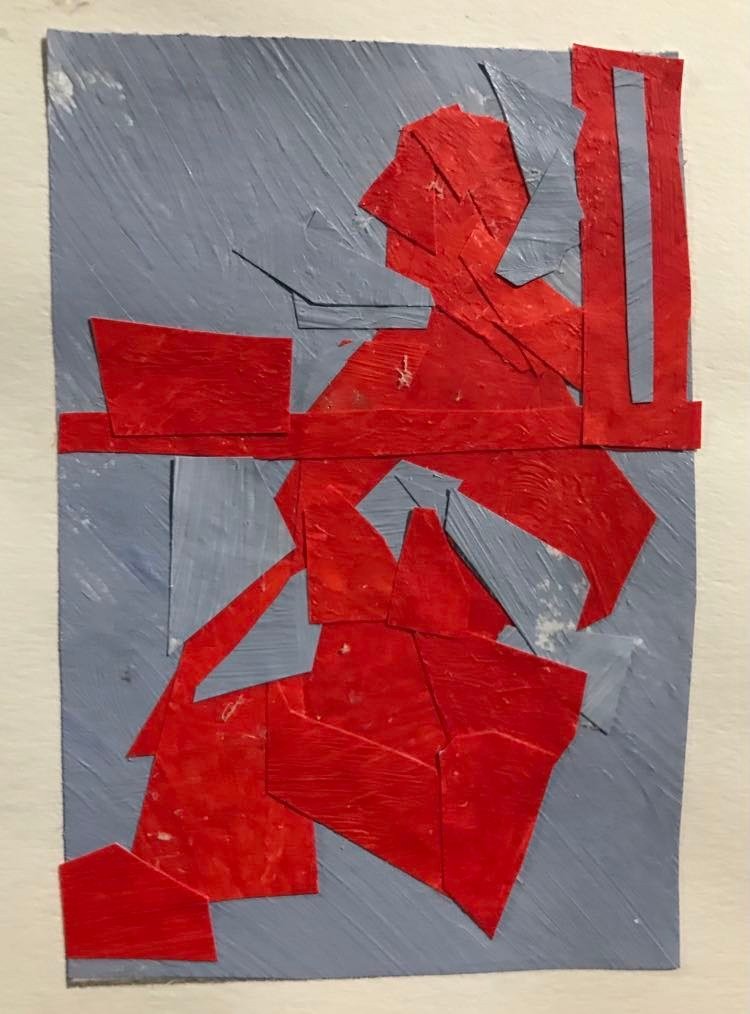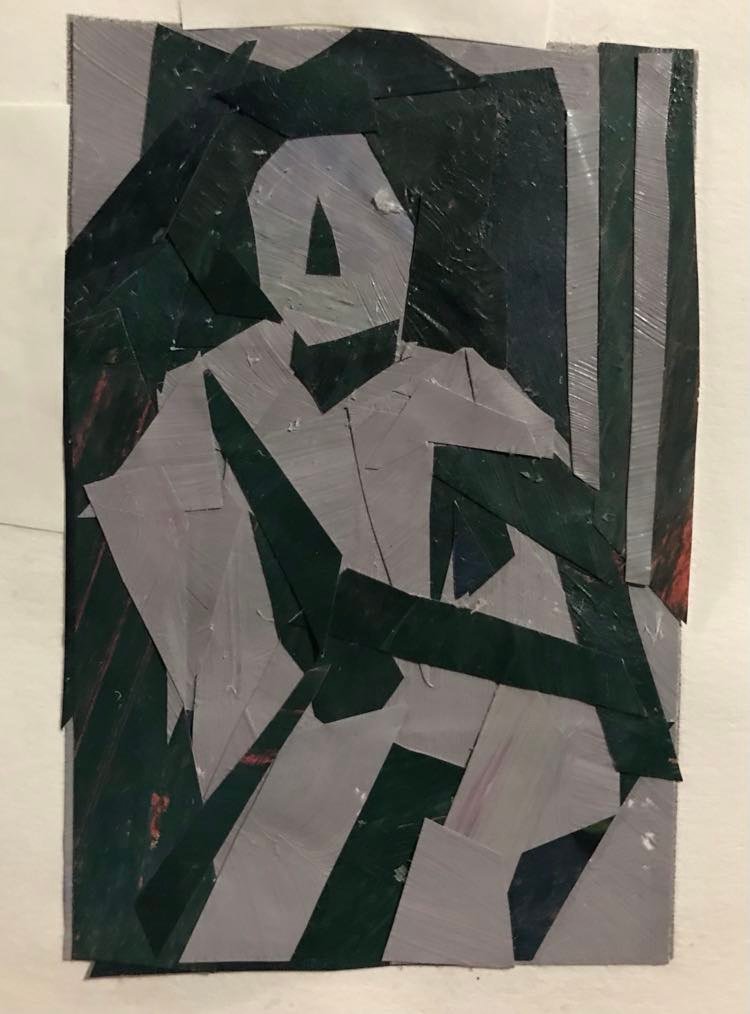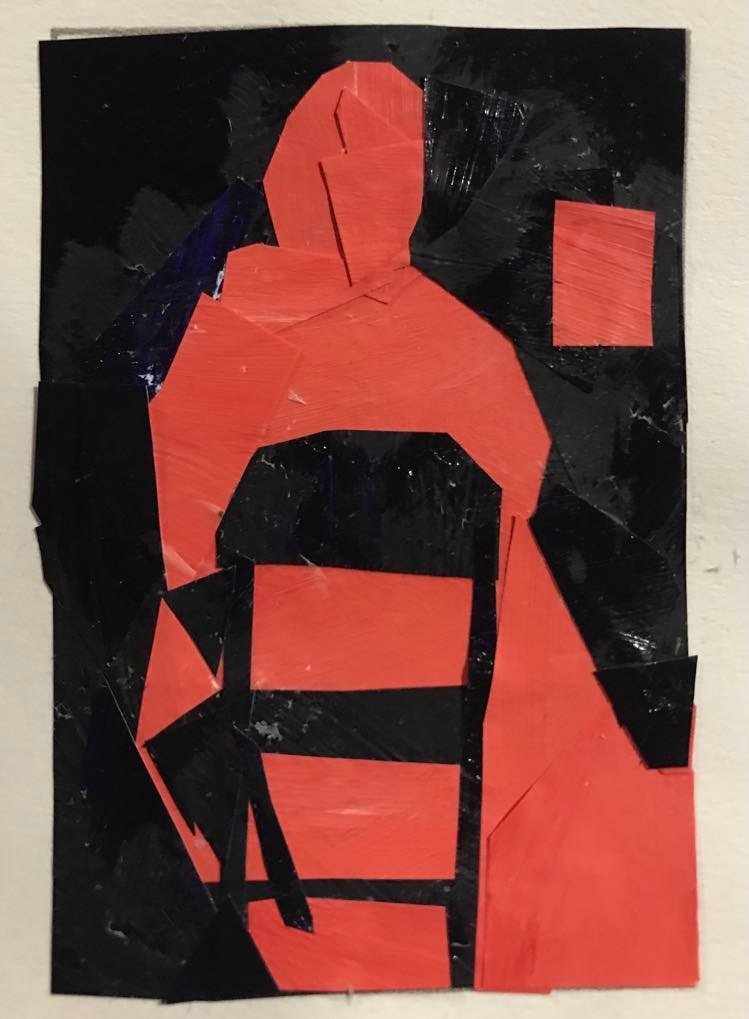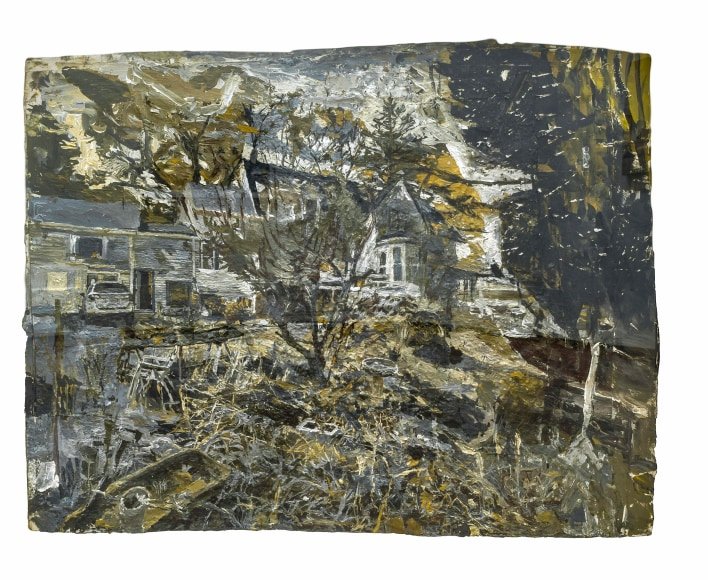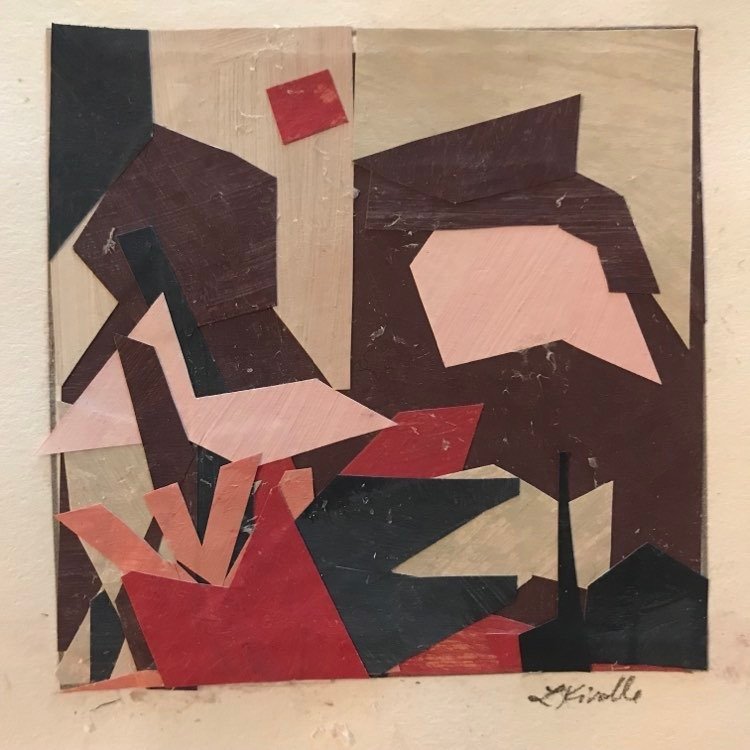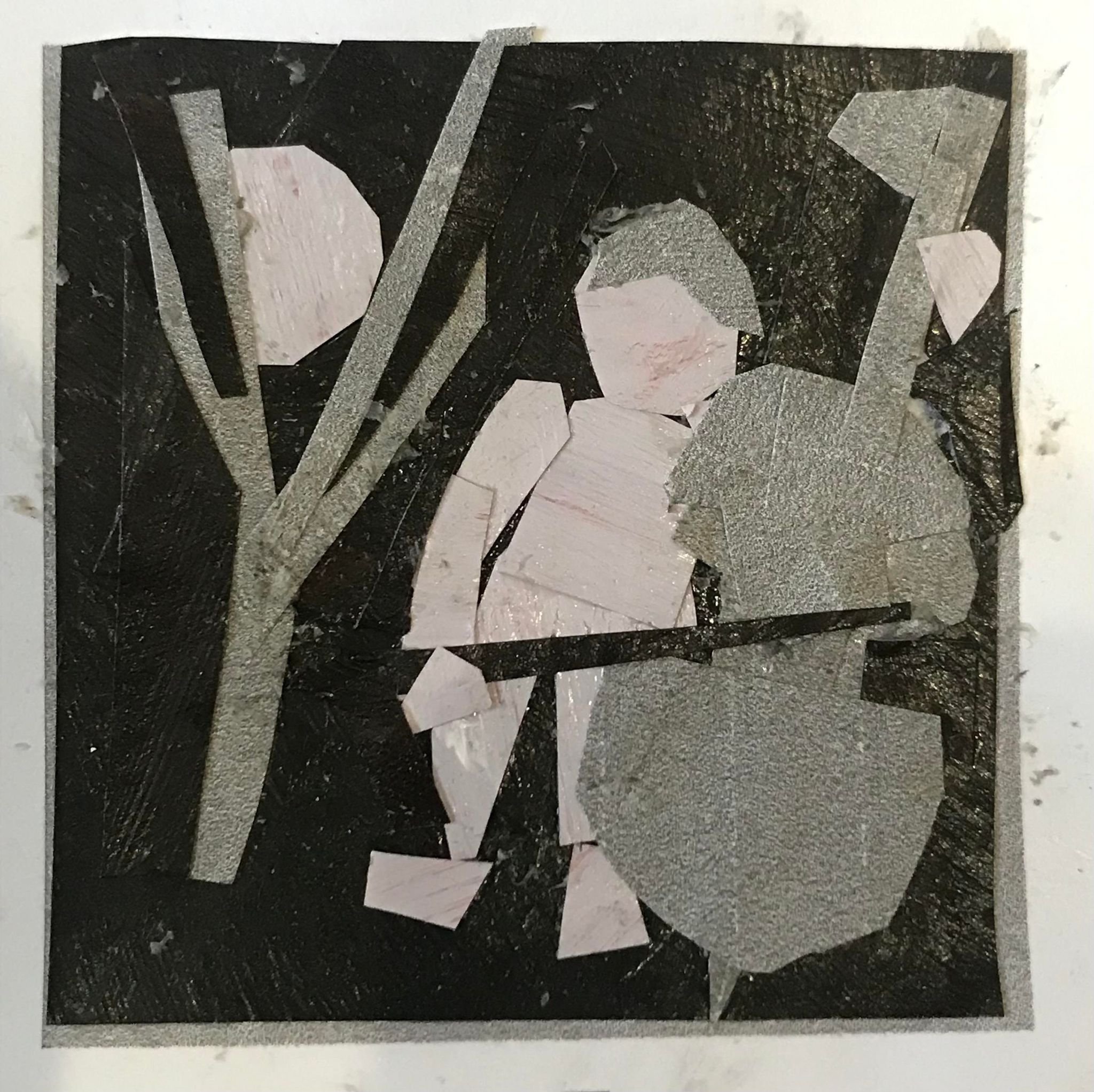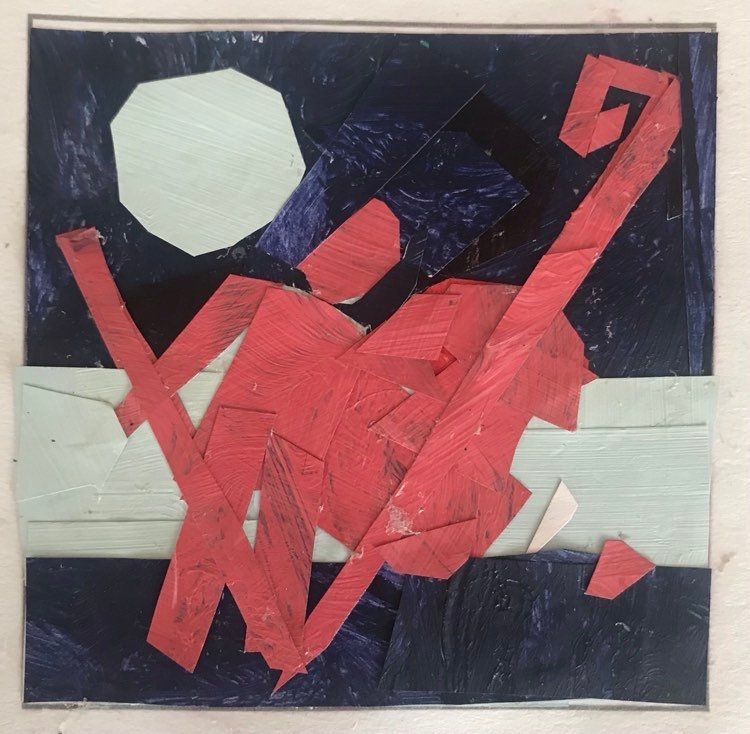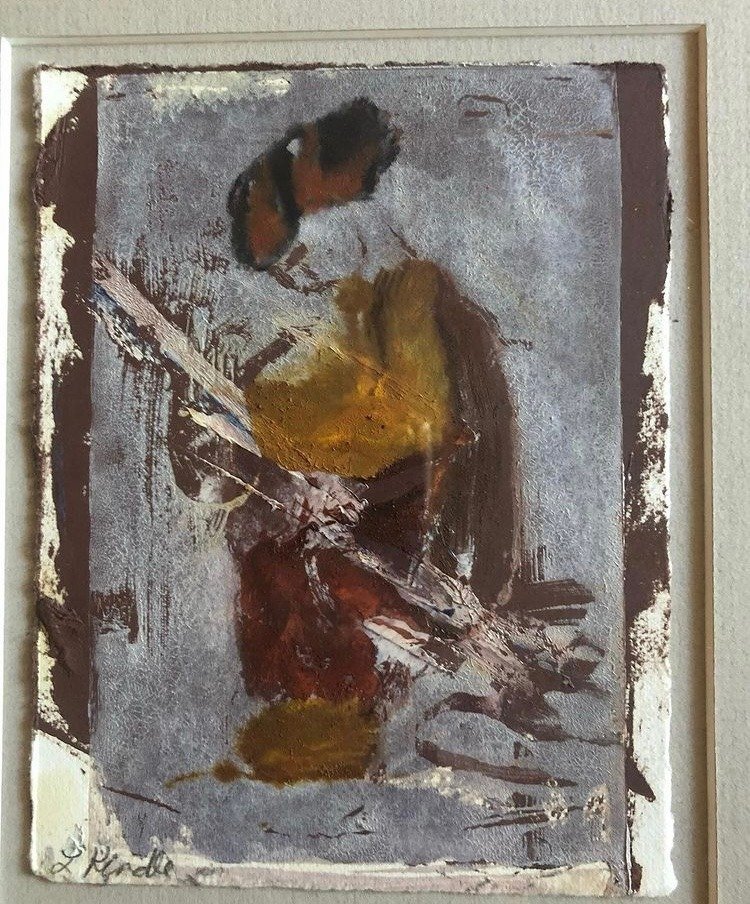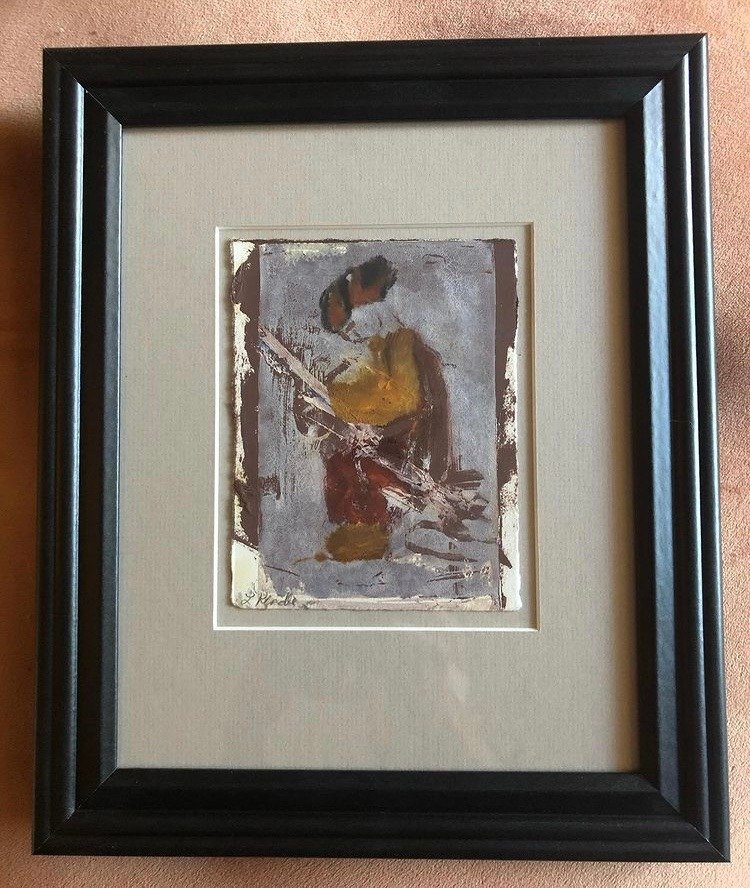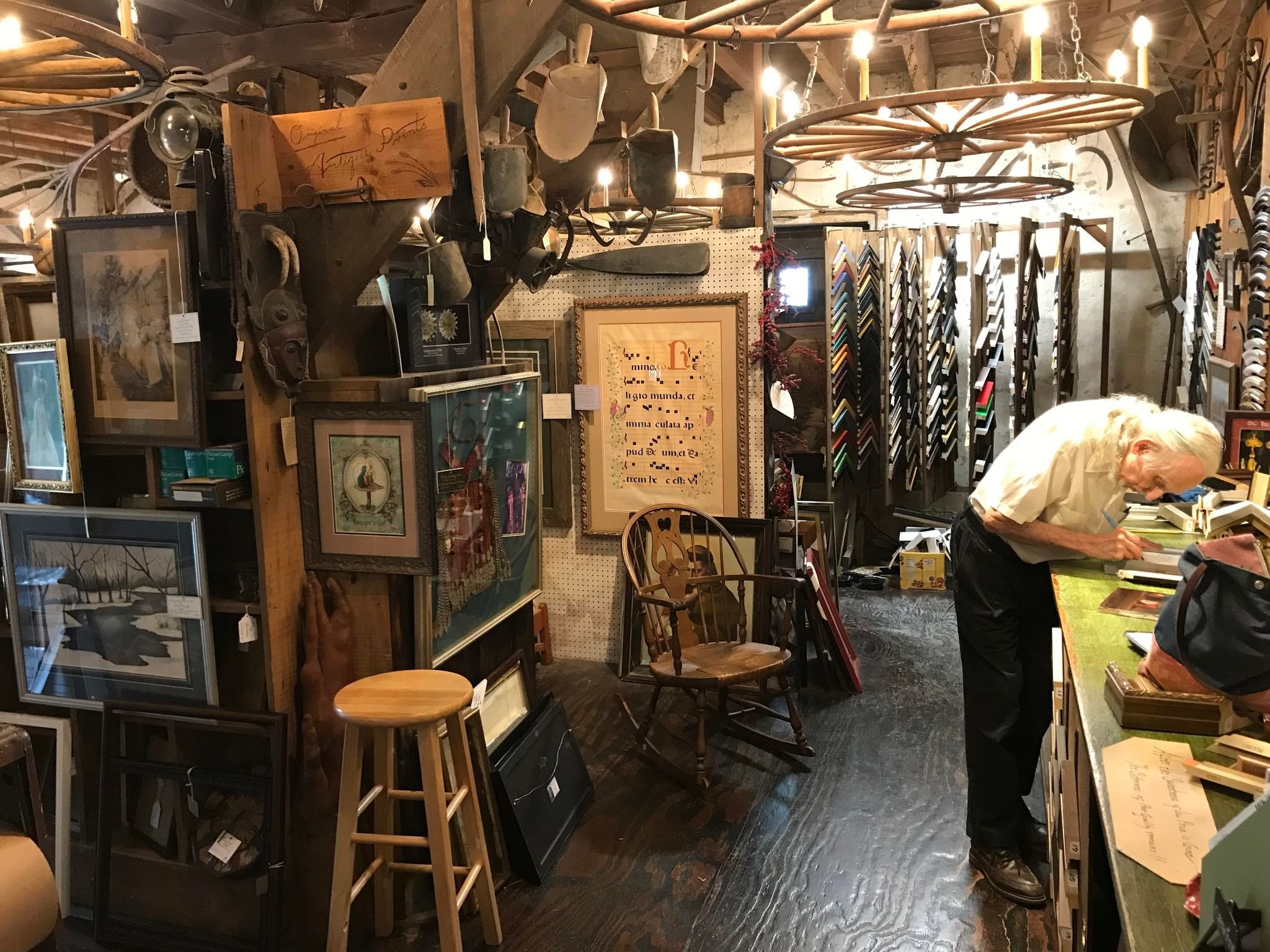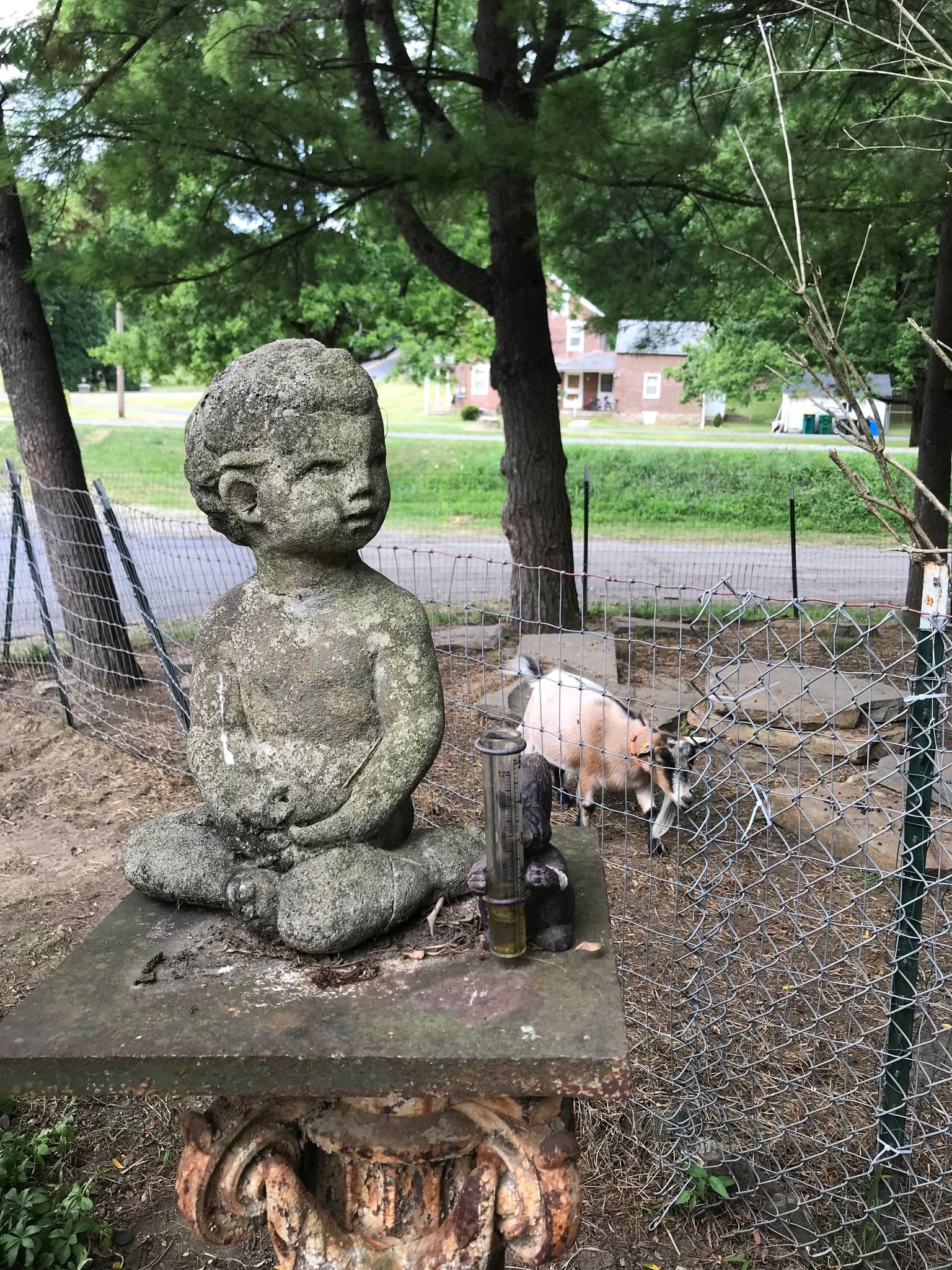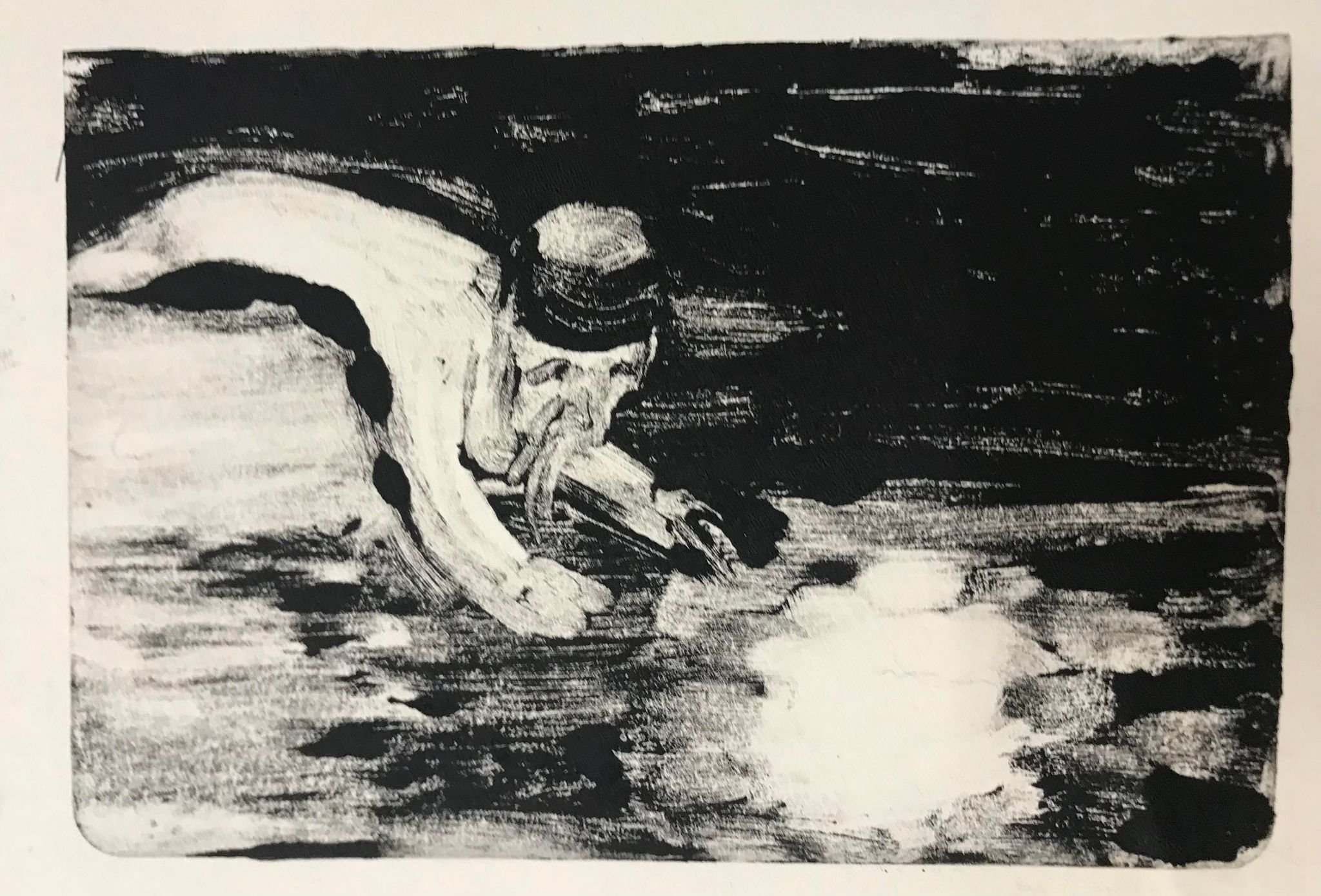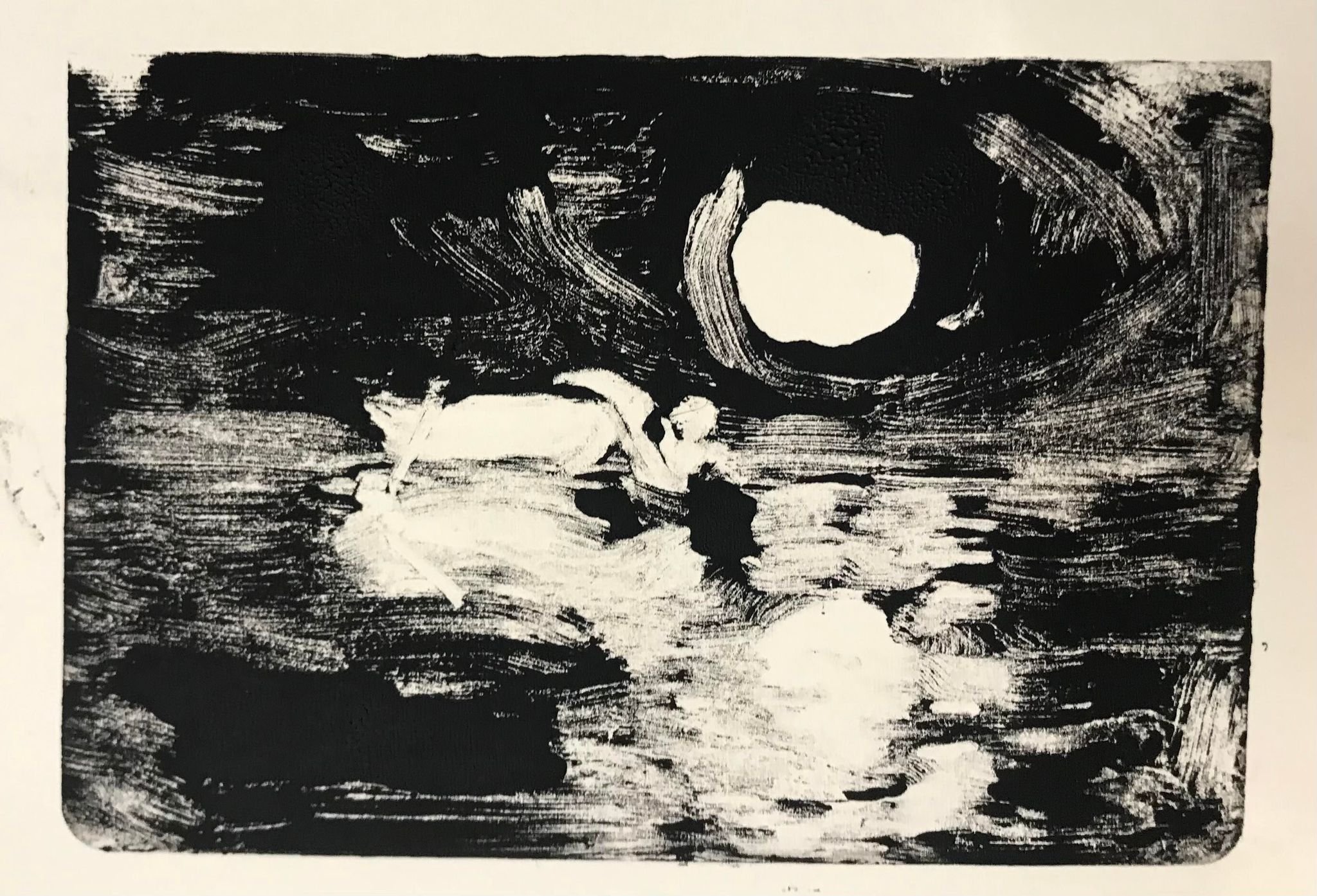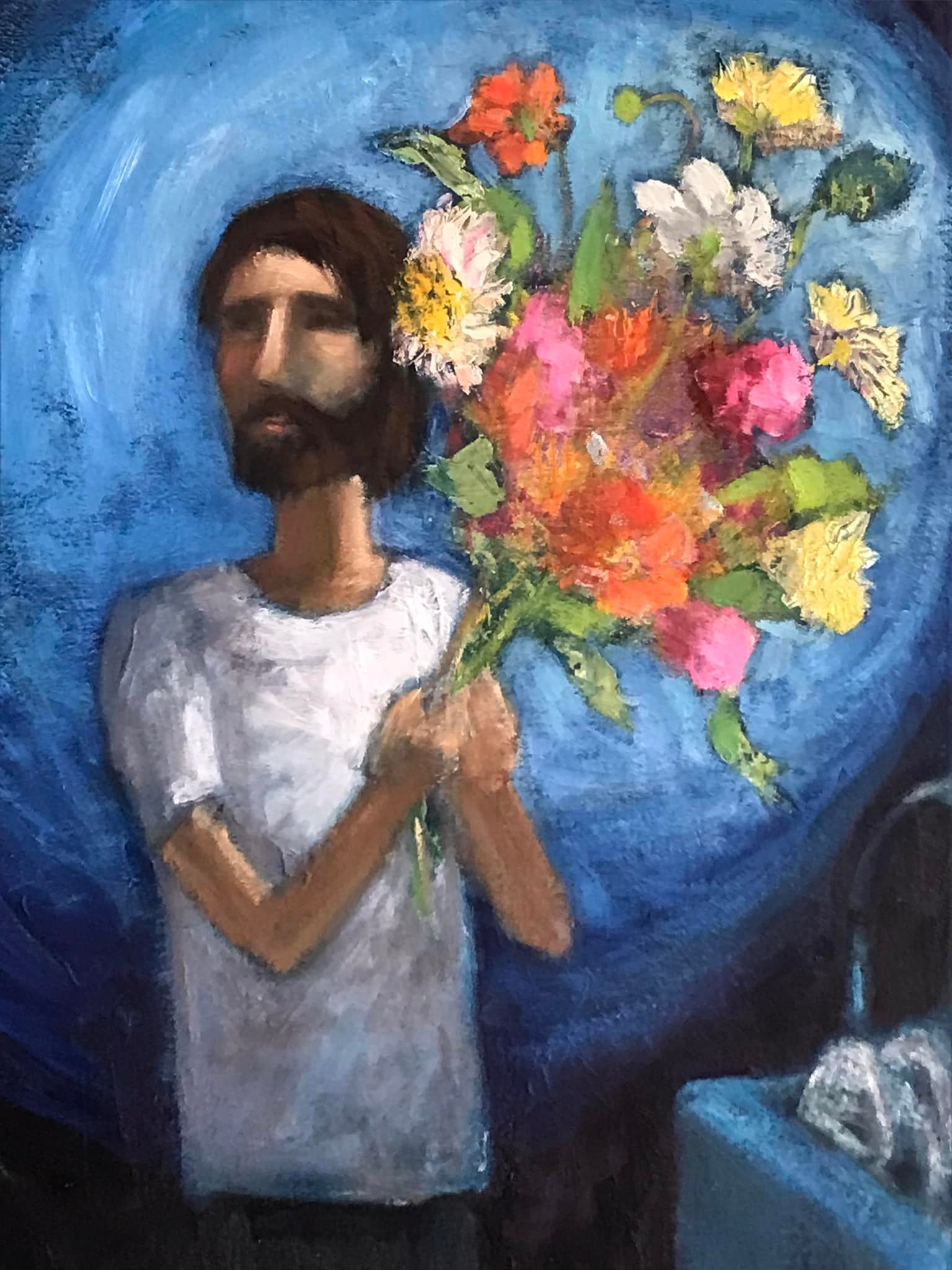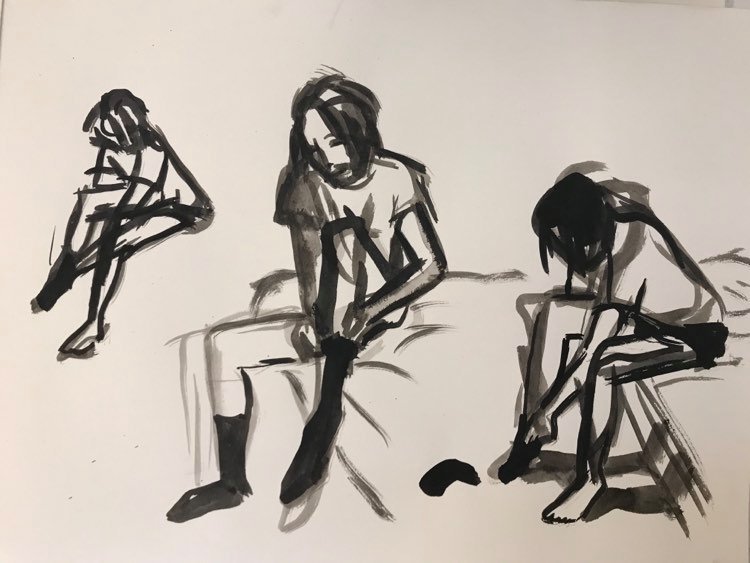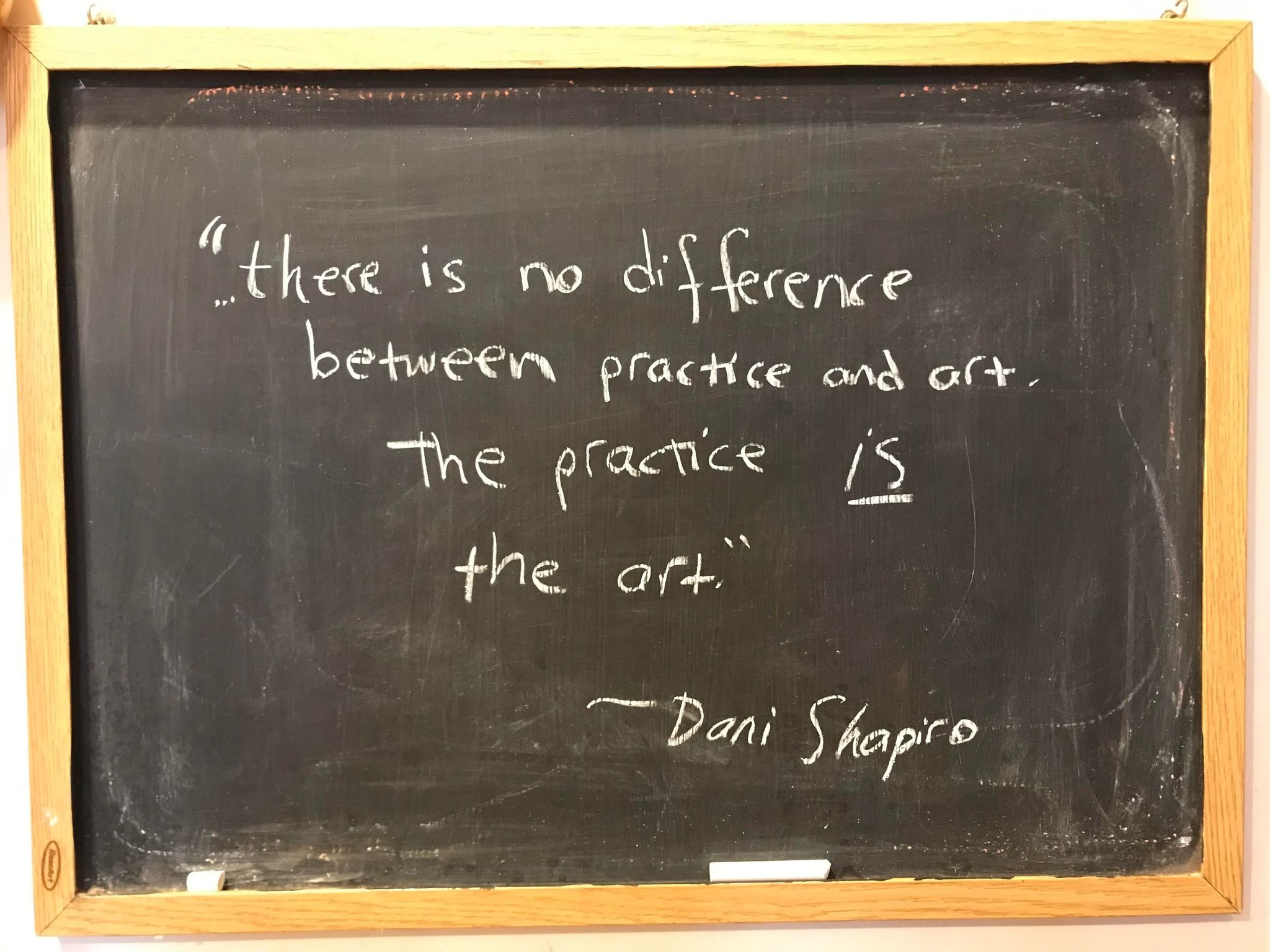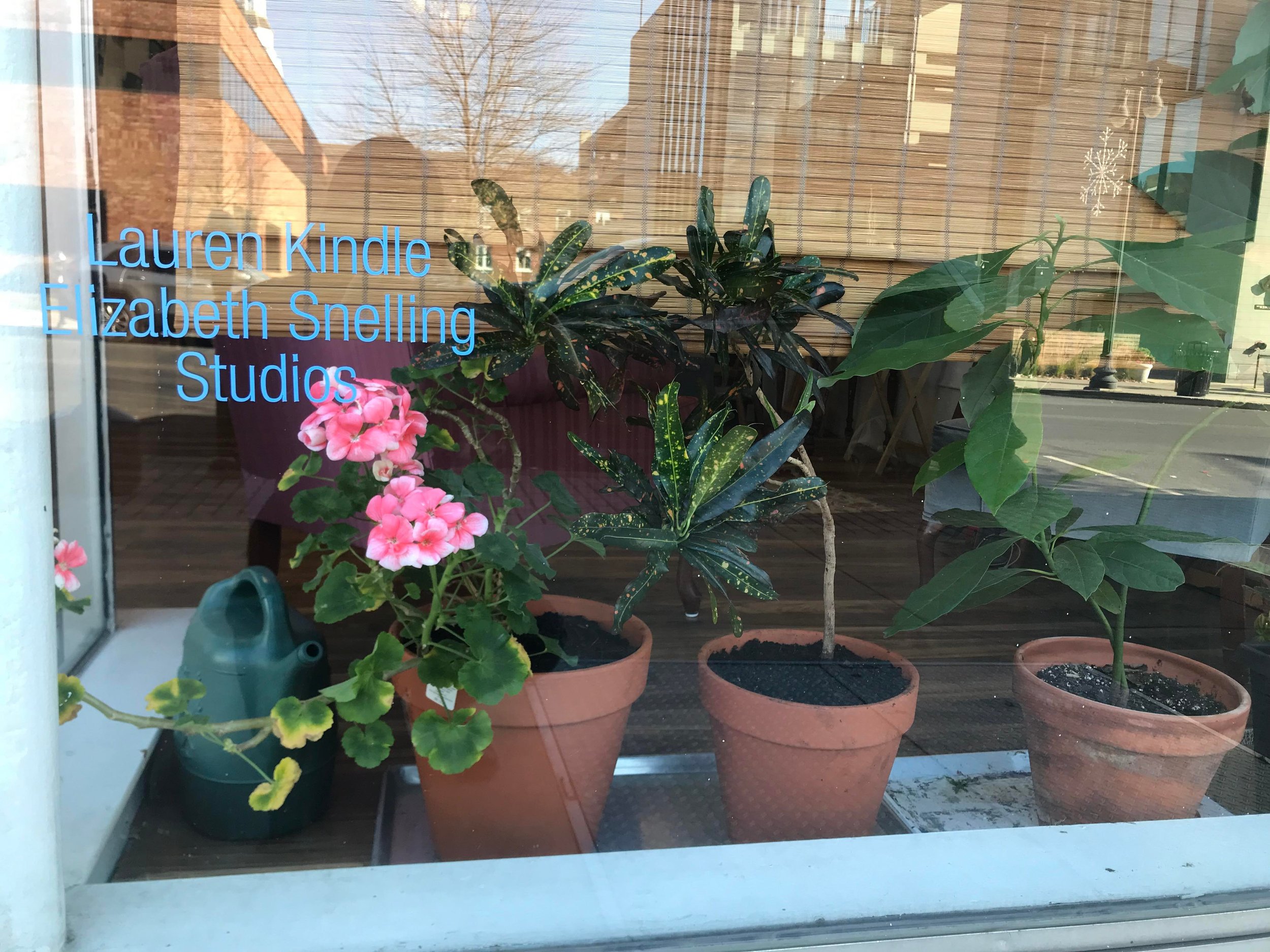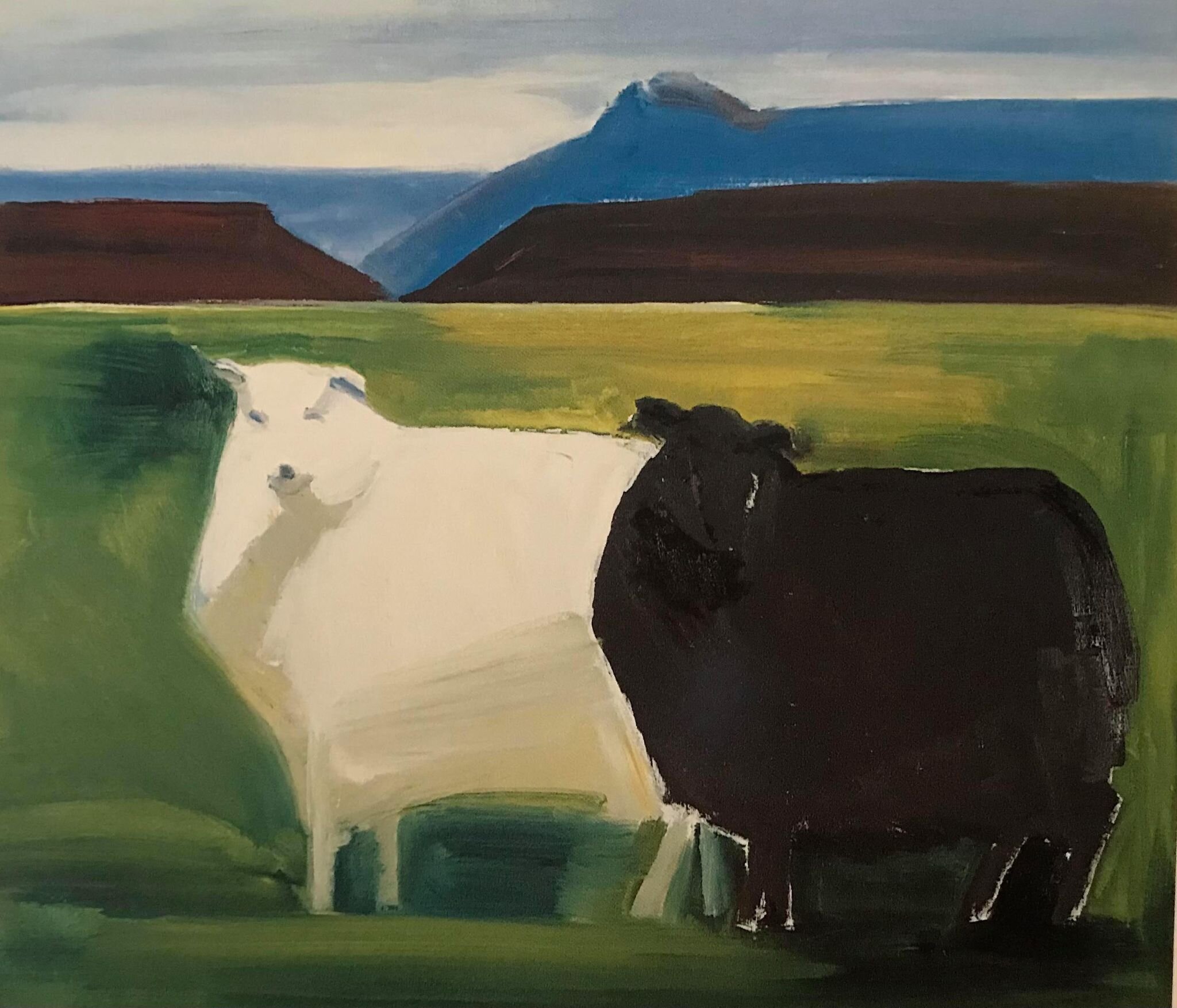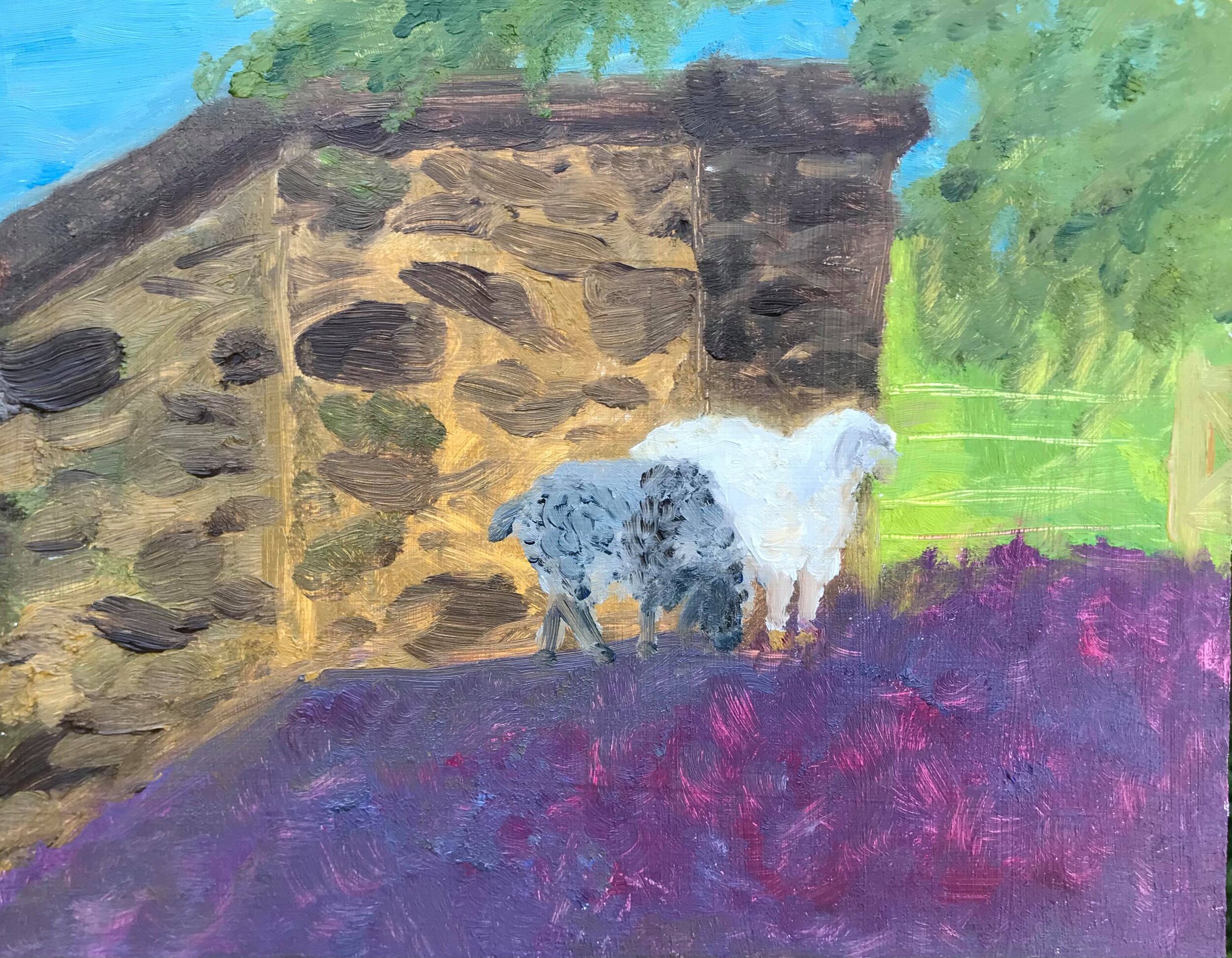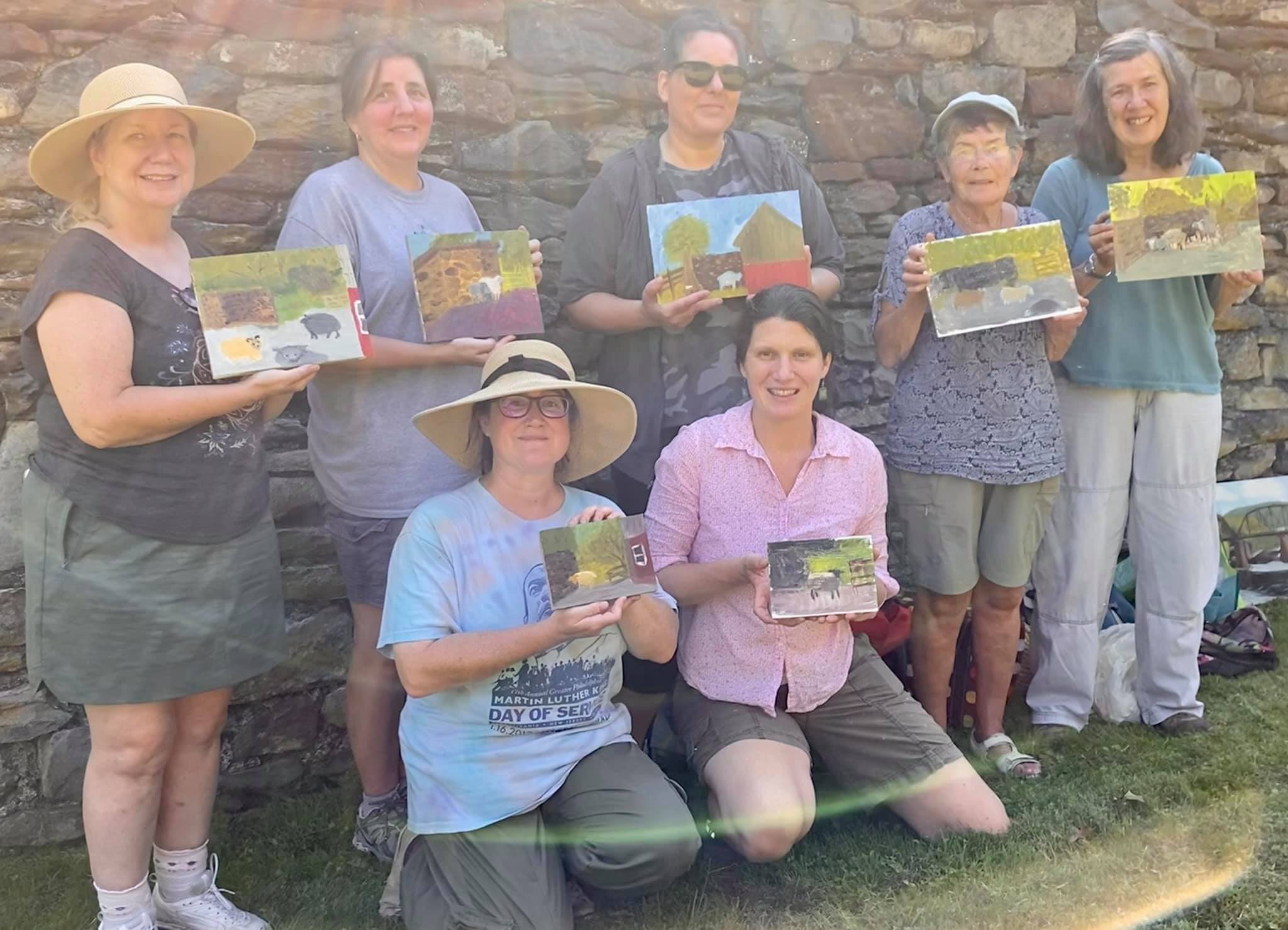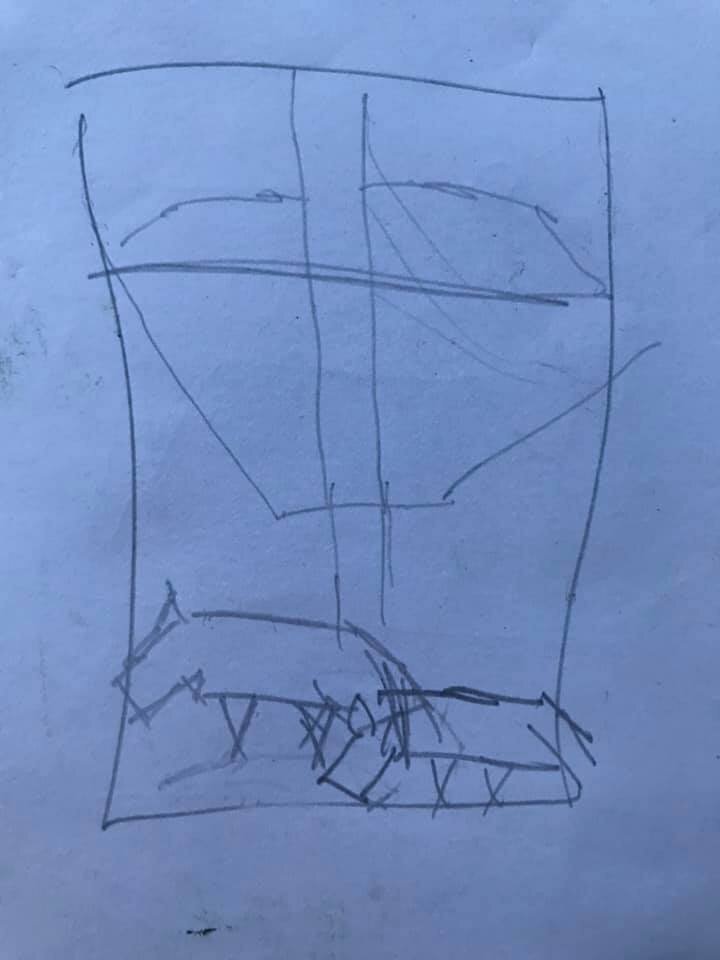“I see a shape. I like it. I draw it.” — Maria Michurina
“Favorite Shapes” painted paper collage, 3x3 inches (inspired by what I learned from Maria Michurina in particular)
Over a month has passed since I returned home from my artist residency workshop at Mount Gretna School of the Art. I had intended to write about my experience sooner, but life got so busy! Now, as I re-read my diary from that time, memories get stirred up. This blog post is my attempt to remember it all, and to set it in my heart. Perhaps it will prove helpful or interesting to you, too!
The workshop at Mount Gretna was led by instructor Ken Kewley. It was two weeks long in total, but the two weeks were divided into two one-week sessions. The sessions were separated by a period of about six weeks in between, during which we could work on what we learned. I already wrote about my first week here: Artist Residency at Mount Gretna School of Art (part 1).
Below is one of the collages I created during the interim between the sessions. I was playing with the composition I found in El Greco’s “Purification of the Temple.”
“The Purification of the Temple,” after El Greco” painted paper collage, 5.25 x 7 inches
“The Purification of the Temple” painting by El Greco
Week 2 of the artist residency-workshop began on Sunday, October 30th. My cottage was the same as before. And just as before, I shared the cottage with two other artists: Natasha and Sheri. By this time, I felt like the three of us had become close friends. I really enjoyed sharing a cottage with them, cooking meals together, and staying up late talking about art and life.
Me, Natasha, and Sheri: a late-night selfie!
Monday October 31st “Monday morning! Having my coffee. Sheri and Natasha are chatting nearby. The three of us stayed up very late last night (eleven!) and I was so excited and had trouble falling asleep. Looking at a Cezanne book now.” —my diary
On the first day, we worked on the same set of 9 collages from 9 am to 5 pm. There were eight students in total, and we all worked quietly and industriously. It felt sort of like meditation. Everytime we finished a series, Ken would scan them, print out the scanned versions, and hand those back to us. Then we would collage over them all over again. And again, and again. One of the main points of this exercise was to be very intentional about where we placed each shape. For some reason, this was more challenging for me than just doing “whatever.” Anyway, it was a full day, and I felt pretty exhausted by dinnertime.
Here are my notes from this day:
Be very aware of the shape, what it is touching.
Be aware of ALL the shapes.
Make sure you LIKE all the unexpected shapes you create. If not, deal with them.
Some of my collages from day one.
“If you have no destination, you can’t get lost.”
—Ken Kewley
One of my many collages from Day 1.
On Tuesday, we had a real treat. The guest artist arrived, and it was Maria Michurina. She had a fun day planned for us. First we each made a little handmade book with blank pages. Then she had us go outside and walk around in the landscape, drawing all the shapes we liked best. We drew with thick, dark 8B pencils. On each page, we put in a simple, enclosed rectangle before we started drawing shapes. Maria told us that the rectangle on the page was like a sock drawer, and each shape was like a funny little sock. We were trying to organize the “socks” within the drawer.
Here are two of my “sock drawers”:
“I see a shape.
I like it.
I draw it.”
—-Maria Michurina
Then we each picked two of our favorite shapes and played around with them, in a series of small collages. We were limited to six colors each. At the end of the day, we made cute little boxes to keep our art and books in. We decorated our boxes with colored paper.
Here are the different assignments Maria gave us, and two of my collages from these assignments:
Maria’s assignments, things to do with our favorite shapes.
“The color picked first is the right color.
However, it will be changed.”
—Maria Michurina
painted paper collage, 3x4 inches
“When you work from life,
you see a shape, you make that shape,
you place it where it feels good.”
—Maria Michurina
painted paper collage, 3x4 inches
Maria Michurina gave two artist talks on two separate evenings. Here are some of my notes from her talks:
There is freedom for the viewer to make up a story.
Visual versus verbal stories (they are different)
The shapes tell their own stories.
“The painting is good because he found something he didn’t know.” —M.M., referring to Laocoön by El Greco)
One shape at a time.
The following day, Wednesday, we had a live model. We did a series of collages from her in the same pose, from different angles. Some notes from this day:
“You can make the dark light and the light dark. You can even switch midstream if you want.” — Ken Kewley
Think of the collage as if you were talking with your hands, describing: “This is here. This is here.” etc.
My collages of the model:
We also built sculptures of the model out of cardboard, tape, and paint. Then we worked from our sculptures after the model left.
My cardboard lady.
Drawing from my cardboard lady.
Stanley Lewis
That same evening, we had the amazing opportunity to hear the renowned artist Stanley Lewis give a talk!
Here are some of my notes from that talk:
the world is warping as you paint
use a knife to cut lines and flowers out of the paper, then glue white paper behind it (for white in a drawing, rather than erasing)
Everything has to relate to everything.
Try to do small paintings of your bigger paintings.
Look at a picture, such as a Bruegel picture, for two minutes a day.
Below is a painting by Stanley Lewis:
“Looking up at the House", 2019” painting by Stanley Lewis, tempera and acrylic on paper, 33x40 inches
Now here is my own collage of the preceding Stanley Lewis painting that I did on Friday of that week:
“Responding to Stanley Lewis” painted paper collage, 2x3 inches
“I’m exactly like a student.”
— Stanley Lewis
Another fun assignment towards the end of the week was working with a partner, whoever we sat next to. Without peeking at what our neighbor was doing, we cut shapes out of our paper, and handed them over. Our neighbor then had to use whatever shape (and color) that we gave them to make a collage of their own. In exchange, we would get one of their shapes to collage with, so it was a collaborative effort.
It was fun getting colors and shapes that were out of my control, and trying to work with what I was given. My parter was Garrett Moore, and I really enjoyed using his colors. At least four or five times, we handed each other almost the exactly same shape and/or color! It was such an incredible coincidence, it made us wonder if there was something supernatural happening.
Here is the collage I ended up making with the colors and shapes Garrett handed to me.
“Duet with Garrett” painted paper collage, 3x3 inches
Towards the end of the week, we did a series of black and white and gray collages of movie stills. This is my favorite one that I made:
“Sorry Wrong Number” painted paper collage, 2x2 inches
On Thursday afternoon, Ken encouraged us to wander around Mount Gretna and make sketches that we would use the next day in collages, using what we had learned during the week.
Sketching outside at Mount Gretna, looking for favorite shapes!
“Cat with green eyes” painted paper collage, 3x3 inches
“Shadows on a Wall” painted paper collage, 3x3 inches
Last class day, Friday, looking at each other’s work.
A few of us after dinner on Friday night, the last official group dinner: Garrett, me, Sheri and Natasha.
(Unfortunately, I wasn’t able to get a photo of all eight of us.)
Although most people left Friday or early Saturday, I stayed until Sunday afternoon, just enjoying the peace and quiet. Natasha and Ken were there too, so we were able to have some pleasant meals and conversations together and reflect on the week.
November 6th (my diary)
“Sunday morning, raining steadily outside the cottage. Today we go home.
Most people have already left. I’ll clean up the cottage this morning and pack.
The rain drums steadily on the porch roof—the door is open to the porch, letting in the fresh air and smells of wet autumn leaf decay, of change. Yesterday, Natasha and I went on a glorious autumn hike in the surrounding woods, which still displays some colors, reds and oranges against the blue sky. The golden sunlight came down. We talked about deep personal issues, and the need to love and take care of oneself…
I’m sad to be leaving this place. ”
“Figs on a plate” painted paper collage, 6x6 inches, using techniques I learned from Ken Kewley’s workshop
So there it is. I feel like I have given my best effort to describe my time at Mount Gretna School of Art. I have given you a little taste of a week that was so rich and full and wonderful that it could have filled hundreds of pages!
“The heart, love in its delicate gentleness,
is still the best and only guide.”
—Odilon Redon, quoted during Maria’s talk
Further Reading: Artist Residency at Mount Gretna School of Art (week 1)











